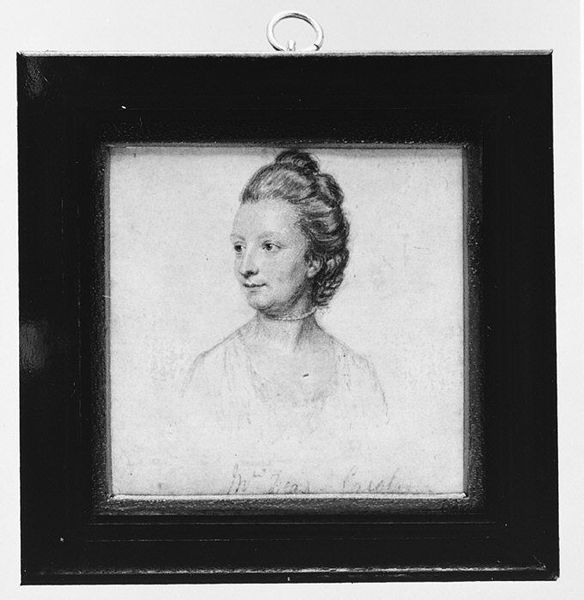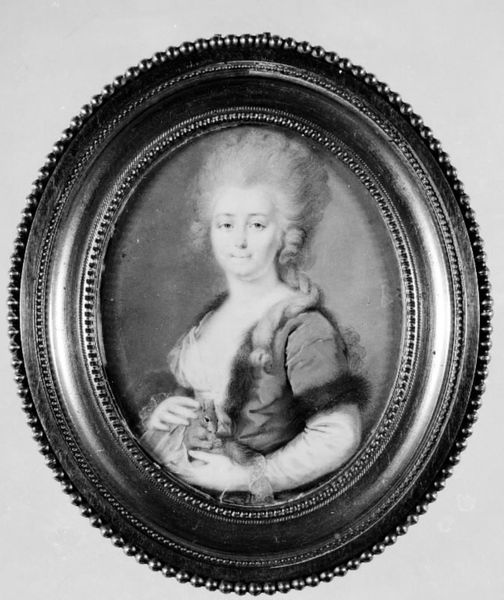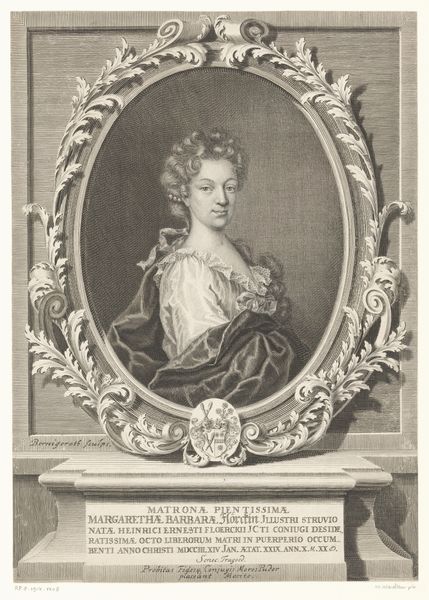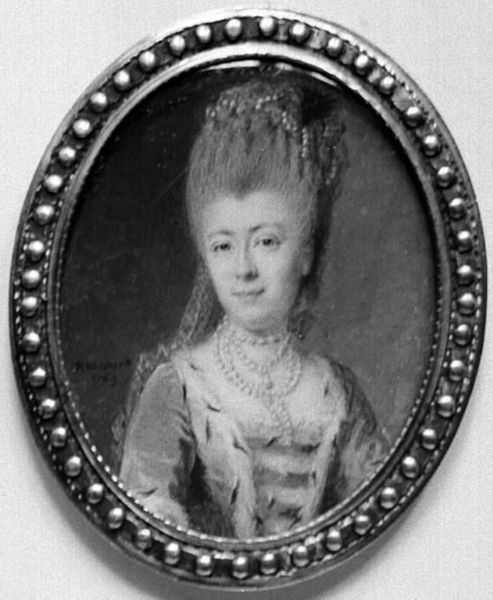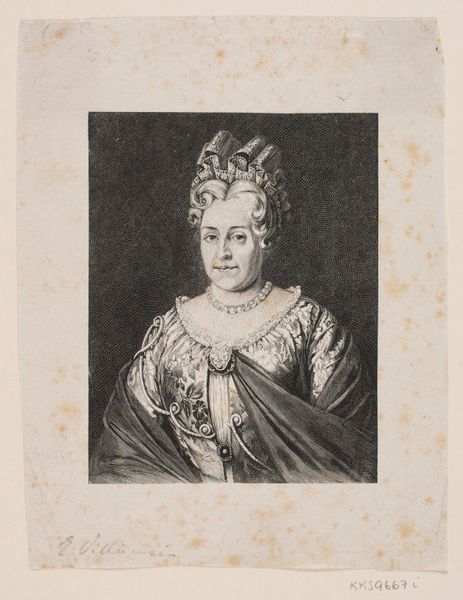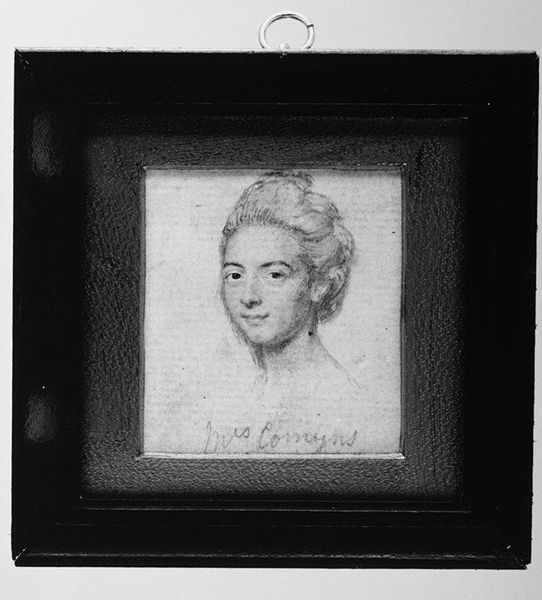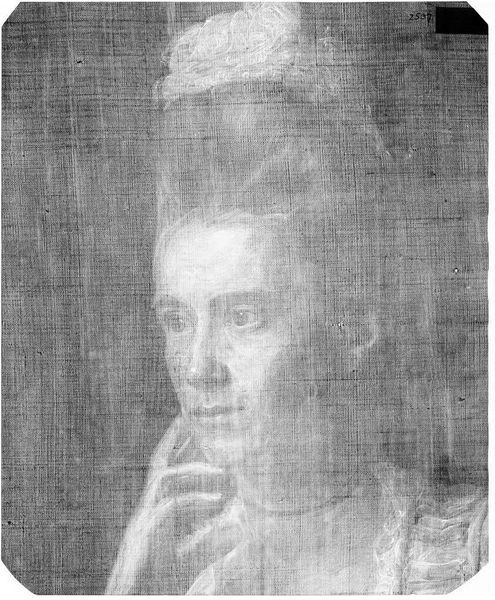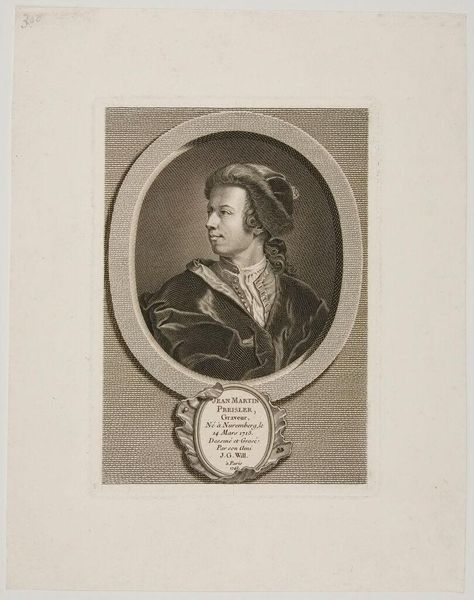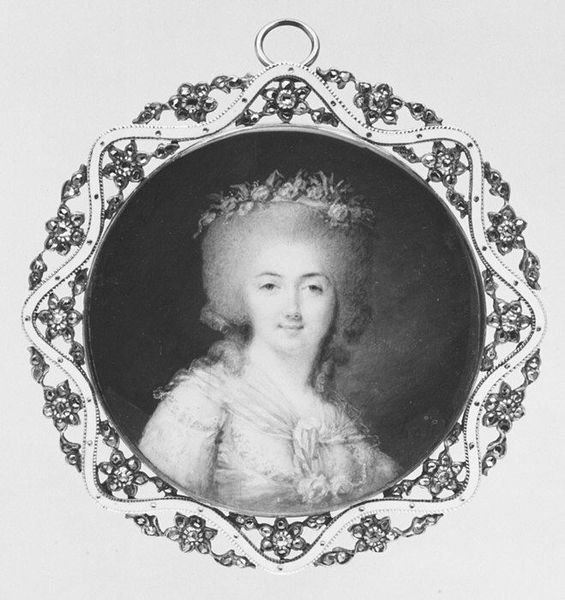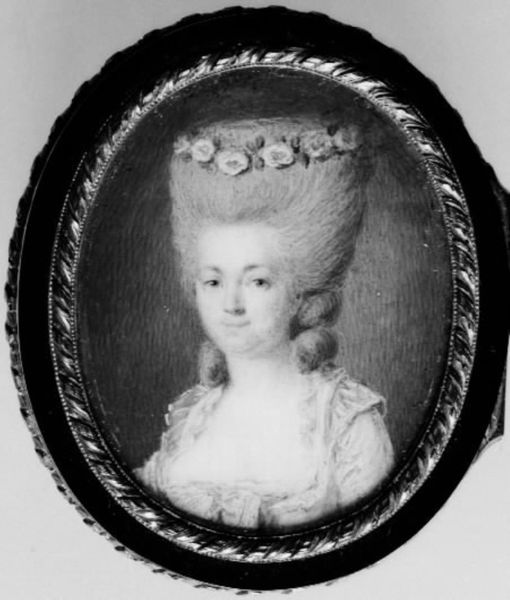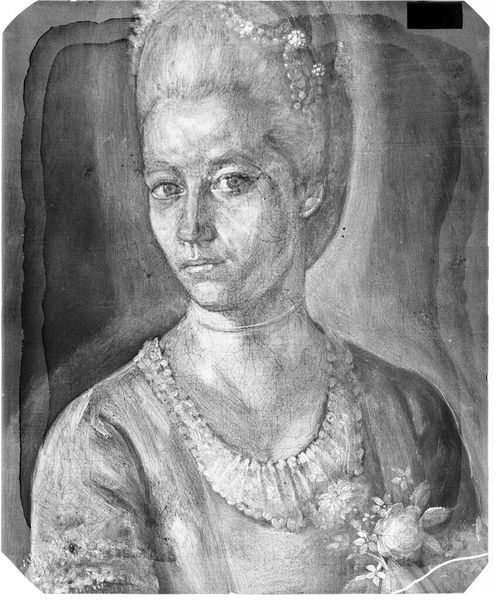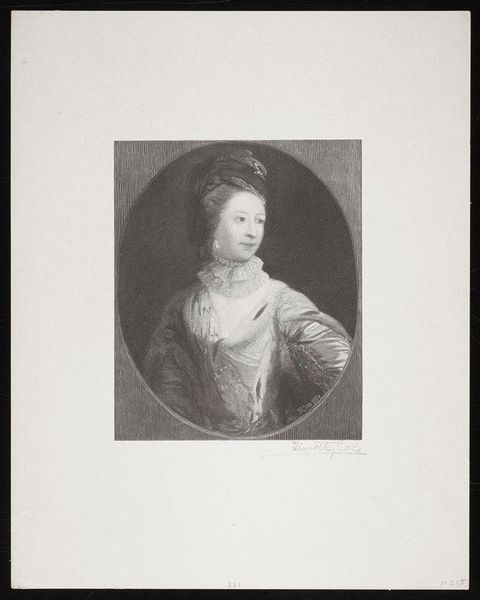
drawing, pencil
#
portrait
#
drawing
#
neoclacissism
#
self-portrait
#
figuration
#
pencil
#
line
#
academic-art
#
miniature
#
realism
Dimensions: 2 1/4 x 2 1/8 in. (56 x 54 mm)
Copyright: Public Domain
Editor: Here we have John Smart's "Portrait of a Woman, Said to Be Lady Dering," likely created sometime between 1761 and 1811. It's a miniature portrait rendered in pencil, and the detail is quite impressive. The woman’s gaze feels very direct, almost confrontational. What stands out to you in this piece? Curator: The power of portraiture, especially in miniature, lies in its symbolic intimacy. Consider the period—late 18th century. Who was Lady Dering, and what did it mean to commission such a portrait? What kind of memory did the patron wish to keep? The lace cap, the ruffled gown...each element is carefully chosen and meticulously rendered. Does it project wealth? Status? Or perhaps something more personal? Editor: I hadn't thought about it as a curated image of identity. The way you talk about it, her clothing and adornments feel less like mere decoration and more like symbolic markers. Curator: Precisely. Every visual choice echoes a specific cultural narrative. Note the neoclassical influence: a restrained elegance, a focus on line and form, projecting ideals of reason and order. How does this artistic choice contribute to our understanding of Lady Dering's place in society? Is this typical of similar portraits, or is the artist using an alternative and personalized approach? Editor: That’s a great question. I need to do more research on the common stylistic conventions for these types of portraits from this time period. Curator: Exactly! Considering those stylistic symbols in their proper context illuminates the sitter’s intended cultural impact and memory. Editor: I see how looking at symbols embedded within this portrait helps tell a more complete story. Thanks for opening my eyes to this new level of appreciation!
Comments
No comments
Be the first to comment and join the conversation on the ultimate creative platform.
